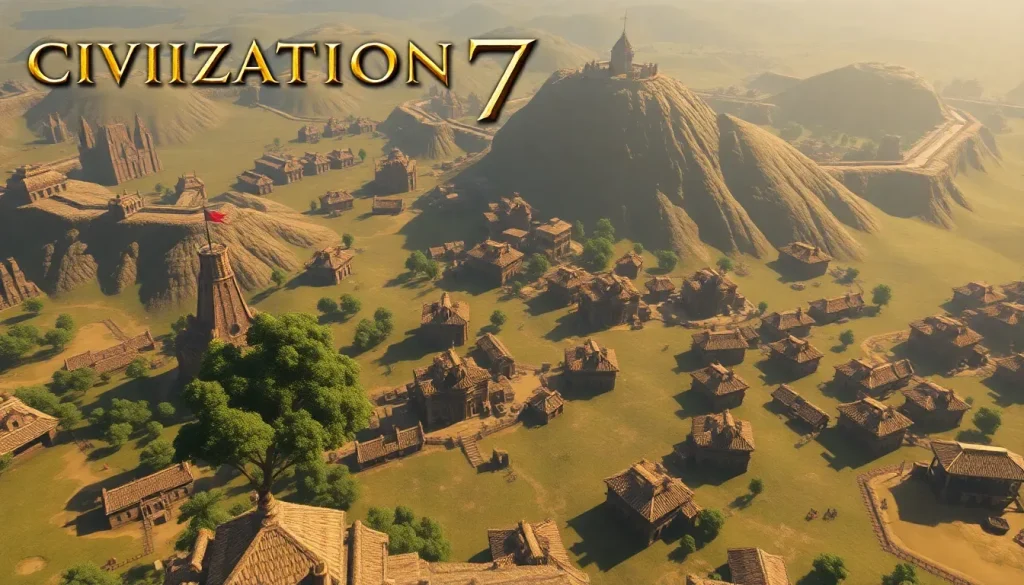Civilization 7 update addresses analysis paralysis with menu changes

The upcoming update for Civilization 7 promises to enhance player decision-making by refining the game’s user interface (UI) and menus. Given the mixed reception of the game's age system and various UI issues, it’s clear that Firaxis has been listening to community feedback. In the latest developer blog, Tom Shaw, the lead producer of Civ 7, outlines the forthcoming changes in patch 1.2.5, aiming to address the core elements of gameplay that have been causing frustration among players.
At the heart of any Civilization 7 gameplay experience are critical decision-making moments: "What should I build? Where do I place constructibles? Should I prioritize improvements or specialists?" Shaw acknowledges that the current version often leaves players feeling overwhelmed, leading to what he refers to as "analysis paralysis." This refers to the situation when players, inundated with choices and insufficient information, struggle to make decisions, resulting in a halt in progress.
Understanding Analysis Paralysis in Strategy Games
Analysis paralysis is a term that resonates with many gamers, especially in complex strategy titles. The challenge arises when the sheer volume of options prevents players from moving forward. This can be particularly pronounced in 4X games like Civilization, where each decision seems to carry significant weight. Players often find themselves:
- Overthinking their options, leading to frustration.
- Stalling their gameplay while seeking the "perfect" choice.
- Missing out on engaging gameplay due to indecision.
Shaw's goal is to transform these moments into empowering experiences. He emphasizes the importance of having pertinent information readily available, so players can feel confident in their choices rather than paralyzed by them.
A significant focus of the new update is the settlement production menu, which has been criticized for its lack of clarity regarding yield data. Shaw notes that the existing system often leads players to choose options based solely on the highest numerical yield, overlooking other influential factors. The revisions aim to provide a clearer picture of potential outputs.
With the new update, the menu will now present:
- Base yields alongside potential bonuses.
- The number of existing improvements that benefit from a given warehouse effect.
- Available adjacencies for each building in the settlement.
According to Shaw, this approach prioritizes simplicity and clarity, making it accessible to a broader audience while still inviting player feedback on these changes.
Improving Clarity with Tooltips
In addition to the settlement menu, Firaxis will also revamp the tooltips associated with buildings, improvements, and wonders. The objective here is to boost the clarity and readability of information, ensuring essential details are not lost amidst a sea of data. The before-and-after comparisons released by the developers showcase the new bulleted lists and tags that enhance user experience by making it easier to track what each object does.
Addressing Yield Loss Transparency
Another critical area of improvement highlighted by Shaw is the visibility of yield losses, particularly those caused by maintenance or overbuilding. The update will ensure that players can clearly see yield losses in all relevant contexts, promoting better decision-making.
For players who may prefer the previous menu format, there will be an option to revert to the old style through the settings menu, although this will still reflect negative yields.
Revising Building Placement Mechanics
The process of building placement is a pivotal moment in the game, one that many players treasure. Shaw acknowledges the satisfaction of hovering over hexes, weighing potential outcomes. However, the current UI often leaves players to navigate these choices with minimal assistance. The forthcoming update promises to enhance this experience through:
- Clear yield indicators that highlight optimal tiles for building placement.
- Dynamic left panel adjustments as players hover over valid hexes.
- Visual arrows indicating sources of adjacency bonuses.
These enhancements aim to transform building placement from a guessing game into a more strategic and informed process, allowing players to apply their strengths effectively.
Streamlined Decision-Making for Growth Events
The update also targets the process of making decisions during growth events, specifically regarding whether to prioritize improvements or specialists. This decision-making process can be complex and is often influenced by several factors. The revised layout will provide:
- Clearer breakdowns of the benefits associated with improvements versus specialists.
- Detailed insights into adjacency bonuses and maintenance costs.
- Explicit visibility of urban tile capacities, helping players identify under-utilization.
This approach aims to diminish the guesswork involved in these decisions and equip players with the information they need to make effective choices.
Future Developments and Community Involvement
Shaw assures players that the changes outlined in the developer blog will be included in the upcoming update 1.2.5, although a specific release date has yet to be announced. He emphasizes that this is just the beginning—Firaxis is committed to further enhancing user experience and usability in various aspects of the game, including settlement banners and a new commerce hub.
It’s clear that player feedback is invaluable in shaping the future of Civilization 7. Shaw invites the community to engage with these updates and share their insights, fostering a collaborative environment for the game’s evolution. For those eager to dive back into the game or start fresh, there are resources available, including a rundown of Civilization 7 leaders and recommended settings to optimize performance.
Are you excited about these updates? Join the conversation in the PCGamesN community Discord server and share your thoughts on how these changes impact your gameplay experience!




Leave a Reply